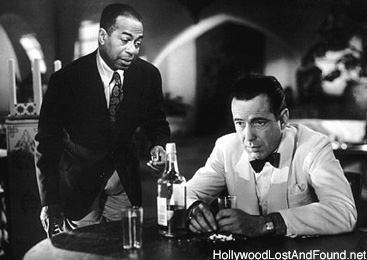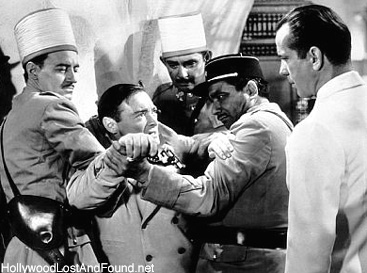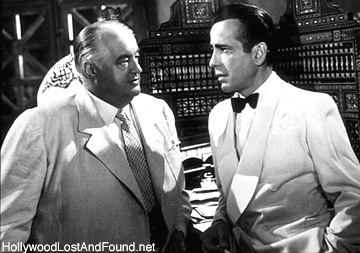|
The Making of "Casablanca," page 2 |
|||||
For the role of Rick, George Raft, James Cagney, and Humphrey Bogart were all mentioned in Karnot's initial recommendation. Raft reportedly campaigned for the part, but Wallis and Curtiz decided Bogart was their Rick. After previously appearing in John Huston's directorial debut, "The Maltese Falcon" (1941), Bogart was already on his way to becoming a star. Philip Dorn was the first choice for Victor Laszlo, but he was unavailable due to his work on MGM's "Random Harvest" (1942). Carl Esmond and Jean-Pierre Aumont were both tested for the role, but the part ultimately went to Paul Henreid. Discovered by Max Reinhardt, Henreid had previously appeared on the London stage in "Victoria Regina" and on the screen in "Goodbye Mr. Chips" (1939). |
|||||
 |
|||||
Hal Wallis had considered changing the role of Sam, the piano player and Rick's confidant, to a woman. Contenders for the role included Hazel Scott and Lena Horne, but Sam ultimately remained a male character. Dooley Wilson, who had created the role of Little Joe in the Broadway production of "Cabin in the Sky" (1940), was borrowed from Paramount for the role. He had been a professional drummer, and couldn't play the piano. Elliot Carpenter played for him off-stage. Claude Rains, who had made his debut as "The Invisible Man" (1933), was set as Renault, which would be his 32nd film role. Peter Lorre and Sydney Greenstreet, both having been in "The Maltese Falcon" with Bogart, were ideal for Ugarte and Ferrari. Otto Preminger was tested for Strasser, a character that had become a Nazi official in the film. Conrad Veidt, who had played the sleepwalker in "The Cabinet of Dr. Caligari" in 1926 and the villainous Jaffar in "The Thief of Bagdad" in 1940, was borrowed from MGM for the role. |
|||||
 |
|||||
Although "Casablanca" started production on May 25, the script was still not complete. No one knew how the film would end. Ingrid Bergman had no idea who her character would end up with until later in production, so she didn't know how to portray her emotions in the scenes filmed early on. "Play it in between," she was told. Screenwriter Howard Koch was brought in to help the Epsteins, who were officially on the project for three more weeks. Koch was asked to pay particular attention to the film's ending, a flashback with Rick and Ilsa in Paris, and other romantic scenes. He created the backstory of Rick's character as an underdog, freedom-fighting for the loyalist cause in Spain, and running guns to Ethiopia. Among the new lines of dialogue he added was Rick's assertion, "I don't buy or sell human beings" when Ferrari offers to purchase Sam. |
|||||
 |
|||||
In the play, the entire action took place in the main room of Rick's cafe. For the film, in addition to the main room, a gambling room in back, and Rick's quarters upstairs, were added to the cafe. These were built on Stage 8 at the Warner Bros. studios in Burbank. Other locations in the film made use of some of the existing sets at the studio. Back lot streets and fragments of other sets were fresh from production of "The Desert Song." The train station Rick where painfully reads a note from Ilsa was created for "Now, Voyager." With the exception of a brief scene of Major Strasser arriving at Casablanca's airport (which was filmed at the old Metropolitan airport at Van Nuys,) the entire film was shot at the studio. |
|||||
|
Page 1 / 3 Back to Stories Index |
|||||
|
Home / Hollywood Stories / Film Sound / Movie Props / Locations Trivia / Events / Tributes / Recommendations / Blog / About Bibliography / Links / FAQs / Shop / Message Board / Disclaimers / Site Map |
|||||
Please support our site by visiting our affiliates: